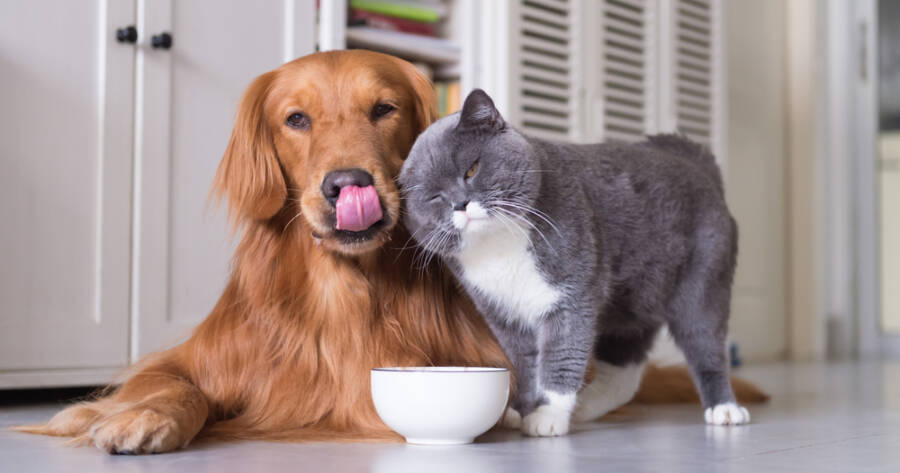Just like humans, pets can develop food allergies that cause discomfort and health issues. Pet food allergies are a common problem, especially in dogs and cats, and can lead to various symptoms, ranging from mild irritations to severe reactions. Identifying and managing food allergies in pets is essential for ensuring their well-being and comfort. Understand some of the most common pet food allergies, how to spot the signs, and what steps you can take to manage them.
What Causes Pet Food Allergies?
Food allergies in pets typically occur when their immune system mistakenly identifies a particular food ingredient as harmful. This triggers an allergic reaction, which can cause inflammation, digestive upset, or skin issues. Unlike food intolerances, which are more about digestive issues, food allergies involve the immune system.
Pets can develop allergies to almost any ingredient in their food, but the most common allergens are proteins such as beef, chicken, lamb, and fish. Grains, such as wheat, corn, and soy, are also frequent culprits. In some cases, artificial additives or preservatives in pet food can contribute to allergies.
Common Symptoms of Pet Food Allergies
Recognizing the symptoms of a food allergy is crucial for getting your pet the proper treatment. Common signs of food allergies in pets include:
- Itchy skin: Pets may scratch, lick, or bite their skin more than usual, particularly around the ears, paws, or face. You might notice red, inflamed patches or sores.
- Ear infections: Frequent ear infections are a common sign of food allergies, especially in dogs. If your pet has recurring ear issues, it might be linked to an allergy.
- Gastrointestinal problems: Vomiting, diarrhea, or gas are common digestive symptoms of food allergies in pets.
- Hair loss: Allergies can cause excessive shedding or thinning of fur due to constant scratching or biting.
- Behavioral changes: Pets experiencing discomfort from allergies may become more irritable or lethargic.
It’s important to remember that these symptoms can overlap with other conditions, such as fleas, environmental allergies, or infections. If your pet is exhibiting any of these signs, it’s best to consult a veterinarian for a proper diagnosis.
How to Identify a Pet Food Allergy
If you suspect your pet has a food allergy, the first step is to consult your veterinarian. They can perform tests to rule out other causes and help identify the specific allergens. One common method for diagnosing food allergies is through an elimination diet, where your pet is fed a limited-ingredient food that doesn’t contain any of the suspected allergens.
Here’s how an elimination diet typically works:
- Switch your pet to a hypoallergenic food, which contains a novel protein (such as venison or duck) and carbohydrates they have never eaten before.
- Feed your pet only the new food for several weeks, without any treats or other food items.
- After the elimination phase, gradually reintroduce ingredients to see if any cause an allergic reaction.
This process can take time, but it is often the most effective way to pinpoint specific food allergies.
Managing Pet Food Allergies
Once you’ve identified the allergens, the key to managing your pet’s food allergies is to avoid those ingredients. Here are some steps to take:
- Switch to a hypoallergenic diet: Many pet food brands offer specialized diets designed for pets with food allergies. These foods typically contain a limited number of ingredients or novel proteins, which can help minimize allergic reactions.
- Read labels carefully: Always check the ingredients list on pet food packaging to ensure it doesn’t contain allergens your pet is sensitive to. Avoid foods with common allergens such as beef, chicken, dairy, or grains, depending on what your pet is allergic to.
- Home-cooked meals: In some cases, preparing home-cooked meals for your pet might be necessary, especially if they have multiple allergies. Your veterinarian can guide you on creating a balanced diet that meets your pet’s nutritional needs.
- Introduce new foods slowly: When changing your pet’s diet, do it gradually over 7-10 days to avoid upsetting their stomach. Slowly mix in the new food with their current food to ensure a smooth transition.
- Monitor your pet’s condition: Once you’ve made dietary changes, keep an eye on your pet for any signs of improvement or recurring symptoms. Regular check-ups with your veterinarian will help ensure that your pet is thriving on their new diet.
Effectively Managing Pet Food Allergies for a Happier, Healthier Pet
Pet food allergies can be frustrating, but with proper identification and management, most pets can live comfortably and allergy-free. If your pet shows signs of food allergies, be proactive in seeking veterinary advice.
Through an elimination diet, careful ingredient selection, and regular monitoring, you can help your pet feel better and live a healthier, more comfortable life. Remember, with the right care and attention, managing food allergies doesn’t have to be a challenge—it can be the key to your pet’s overall well-being.

